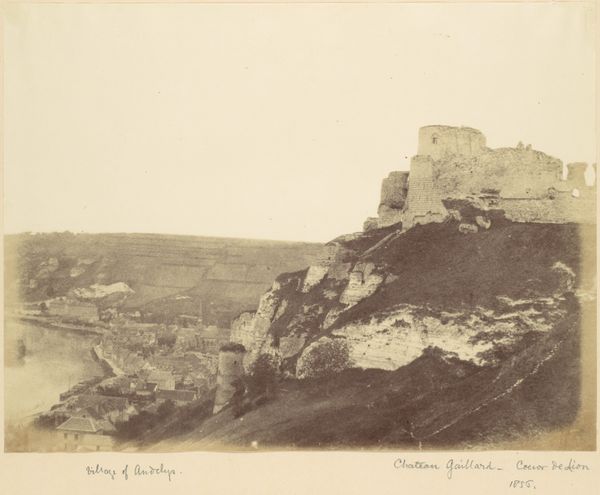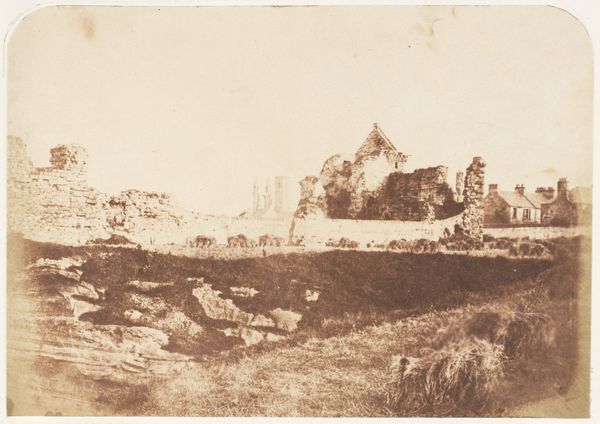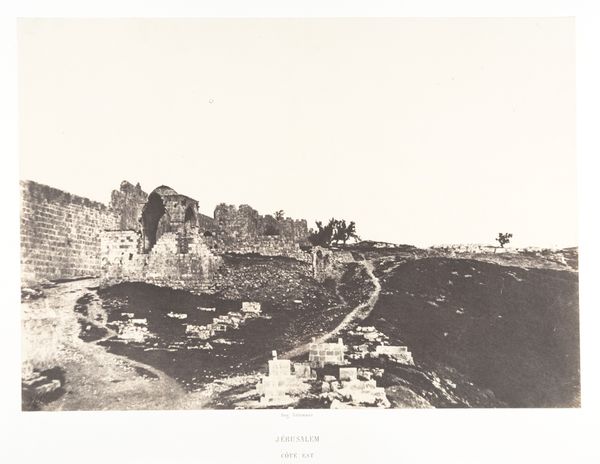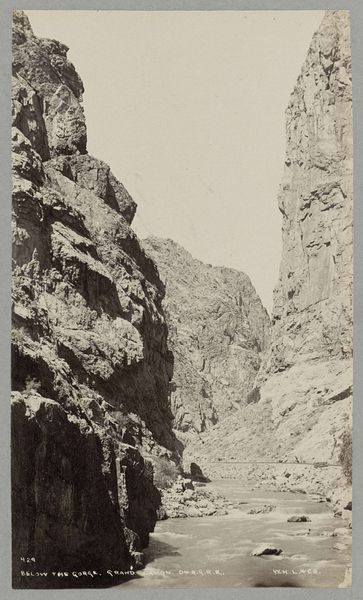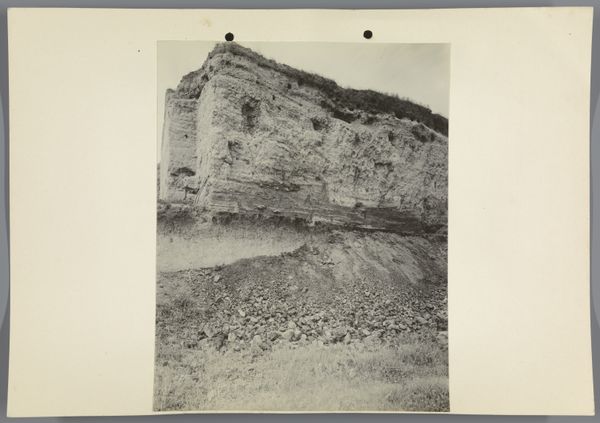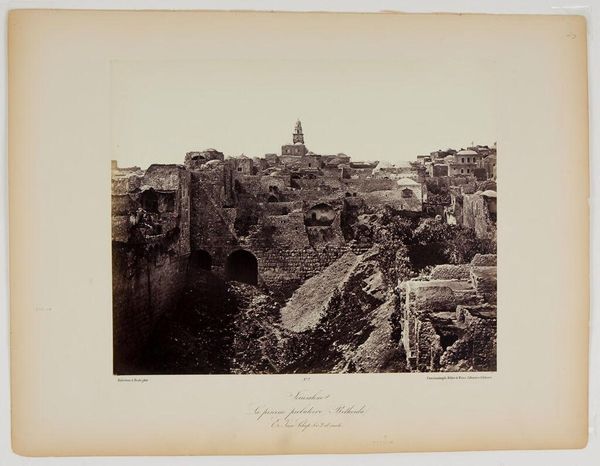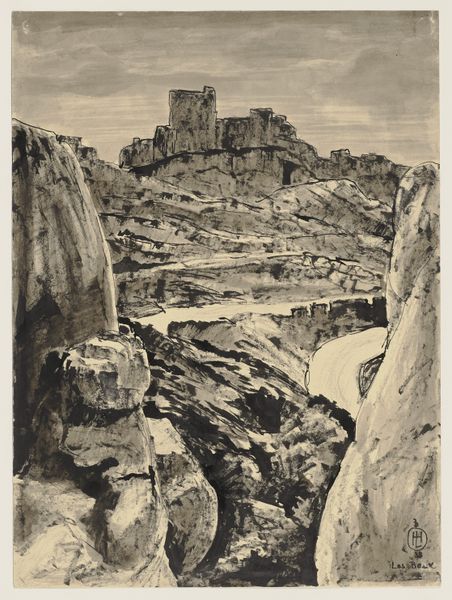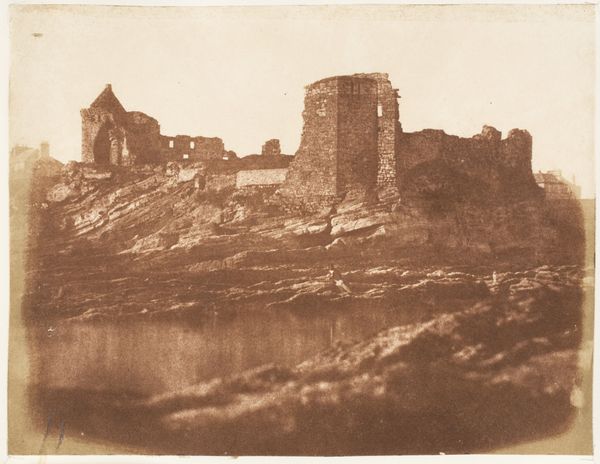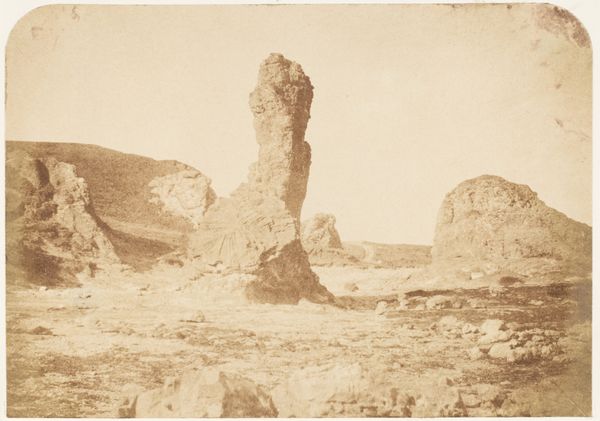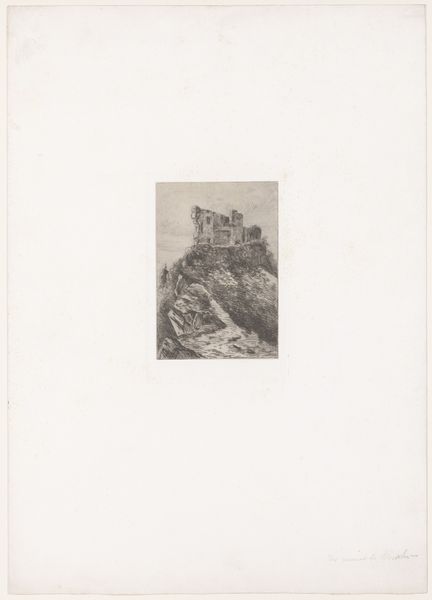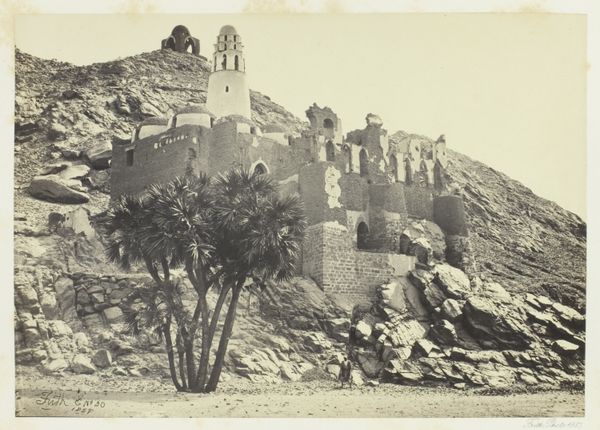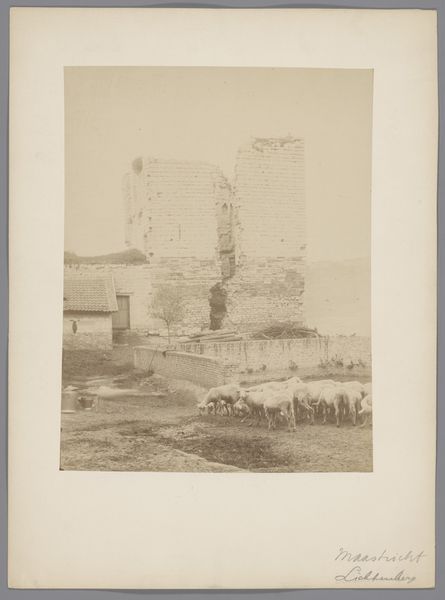
St. Andrews. The Fore Tower of the Castle 1843 - 1847
0:00
0:00
print, daguerreotype, photography, architecture
# print
#
landscape
#
daguerreotype
#
outdoor photography
#
photography
#
romanticism
#
architecture
Copyright: Public Domain
This photograph of St. Andrews Castle was made by Hill and Adamson, pioneers of early photography, sometime between 1843 and 1848. They used the calotype process, an early photographic technique that involved coating paper with silver iodide. The calotype was revolutionary, as it allowed for multiple prints from a single negative, but it was far from perfect. The paper fibers often showed through, creating a soft, somewhat hazy effect. Look at the rough texture of the stone, softened and romanticized by the process. The image isn’t just a record of a place; it's a record of a specific moment in the history of image-making, of the skilled labor required to coax an image into being through chemistry and light. Hill and Adamson weren’t just artists, they were inventors, working at the intersection of art and science. They were part of a larger social and technological shift, as photography democratized image-making, challenging traditional hierarchies of artistic skill. It reminds us that every image, no matter how seemingly straightforward, is the result of material processes and human ingenuity.
Comments
No comments
Be the first to comment and join the conversation on the ultimate creative platform.

